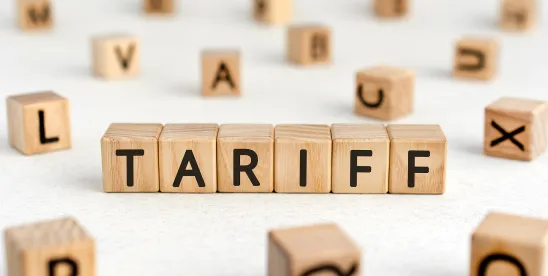On February 1, 2025, President Trump signed orders imposing a 25% tariff on imports from Canada and Mexico and a 10% tariff on imports from China. The tariffs are set to take effect on Tuesday, February 4.
Following a discussion with Mexico’s President Claudia Sheinbaum on Monday, February 3, President Trump announced a one-month pause on the tariffs for Mexico. Canadian Prime Minister Justin Trudeau and President Trump announced that they had reached an agreement for a similar 30-day pause later that evening.
History
A president can raise tariffs without congressional approval in certain circumstances, such as if there is a threat to national security, a war or emergency, harm or potential harm to a U.S. industry or unfair trade practices by a foreign country. President Trump is using the International Emergency Economic Powers Act to impose these tariffs. Tariffs saw their first major resurgence since the 1930s during President Trump’s 2017-2020 term, and President Biden continued to use tariffs during his administration.
Tariffs are generally imposed as a percentage of a good’s value or as a fixed amount on a specific item when it crosses an international border. The tariff is paid by the importer. The increase in cost may cause a variety of effects such as:
- Importing companies finding alternate sources for the goods,
- Importing companies passing the price increase on to consumers,
- Exporting companies lowering the product price to maintain the importer’s business, or,
- Exporting companies relocating to other jurisdictions to avoid tariffs altogether.
Updated Tariffs
Mexico Tariffs
Following the one-month pause referenced above, the new tariff will be at a rate of 25% on the value of the good, in addition to any other import fees. The order indicates that tariffs will cover all imported merchandise.
Canada Tariffs
Following the 30-day pause referenced above, the new tariff will be at a rate of 25% on the value of the good, in addition to any other import. The order indicates that tariffs will cover all imported merchandise other than “energy or energy resources” which will be subject to a 10% rate instead.
“Energy or energy resources” includes crude oil, natural gas, lease condensates, refined petroleum products, uranium, coal and critical minerals among other energy sources.
China Tariffs
The new tariff will be 10% on the value of the good, in addition to any other import fees. The order indicates that tariffs will cover all imported merchandise from China.
Client Guidance
The increased costs from tariffs may be challenging for many businesses and the following actions serve as a baseline for navigating the current landscape as you navigate these new tariffs.
- Notify customers if increased costs of tariffs will be passed down to them and inform them that any tariff-related price hikes will be reflected on invoices. Failure to pay may result in supply disruption.
- Review contracts with suppliers and customers to determine how the cost of the new tariffs will be allocated. Look for price-adjustment clauses, force majeure language or other relevant terms.
- Begin negotiations with suppliers or explore sourcing options from different countries.
- Importers should review import compliance policies.





 />i
/>i

